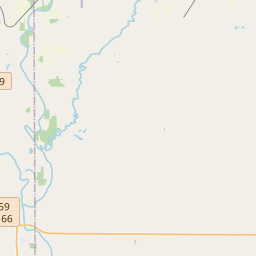Baxter Springs Civil War Memorial
Historical marker location:






April 12, 1861: The Civil War begins with the Confederate attack on Fort Sumter, located in South Carolina's Charleston Harbor.
April 15, 1861: President Abraham Lincoln issues a call for 75,000 volunteers to serve in the Union Army to suppress the rebellion.
May 24, 1861: The first major land battle, known as the First Battle of Bull Run (or First Battle of Manassas), takes place in Virginia. It ends in Confederate victory.
September 17, 1862: The Battle of Antietam in Maryland becomes the bloodiest single-day battle in American history, with heavy casualties on both sides. The Union forces, commanded by General George McClellan, manage to halt Confederate General Robert E. Lee's advance into Union territory.
January 1, 1863: President Lincoln issues the Emancipation Proclamation, declaring that all slaves in Confederate-held territories are to be set free. However, the proclamation does not immediately free all slaves in the United States.
July 1-3, 1863: The Battle of Gettysburg in Pennsylvania takes place, resulting in a significant Union victory and inflicting heavy casualties on Confederate forces. It marks a turning point in the war.
November 19, 1863: President Lincoln delivers the Gettysburg Address, emphasizing the principles of liberty, equality, and the preservation of the Union.
April 9, 1865: General Robert E. Lee surrenders to Union General Ulysses S. Grant at Appomattox Court House in Virginia, effectively ending the Civil War.
April 14, 1865: President Lincoln is assassinated by John Wilkes Booth while attending a play at Ford's Theatre in Washington, D.C.
May 10, 1865: Confederate President Jefferson Davis is captured, signaling the collapse of the Confederate government.
December 6, 1865: The Thirteenth Amendment to the United States Constitution is ratified, officially abolishing slavery throughout the country.
While this timeline provides an overview of key events, it is important to note that the Civil War spanned over four years, from 1861 to 1865, and encompassed numerous battles, campaigns, and political developments that shaped the course of American history.
Dwight D. Eisenhower, the 34th President of the United States, was born in Denison, Texas, but grew up in Abilene, Kansas.
The county was officially established on August 25, 1855, as one of the original 33 counties of the Kansas Territory. Its early economy was based on agriculture, with settlers primarily engaging in farming, particularly growing corn and livestock. However, the discovery of valuable minerals, including lead and zinc, in the late 1800s brought a significant economic boom to the region. This led to the establishment of mining towns like Weir City, Baxter Springs, and Galena, which became major hubs of mining activity.
Cherokee County also played a role in the Civil War, as it was located on the Missouri-Kansas border. Baxter Springs, in particular, experienced multiple skirmishes and was a strategic location for both Union and Confederate troops. The Battle of Baxter Springs in 1863 was a significant event, during which Union forces successfully defended the town against Confederate guerrilla fighters.
In the 20th century, the mining industry declined, leading to a diversification of the economy. The county focused on agriculture, manufacturing, and later, tourism. Today, Cherokee County is known for its beautiful natural landscapes, such as the scenic Spring River and the expansive Crawford State Park, which offers various outdoor recreational activities. The county also preserves its rich heritage through museums and historical sites, allowing visitors to explore the history and culture of the area.
Cherokee County Timeline
This timeline provides a concise overview of the key events in the history of Cherokee County, Kansas.
- 1835 - Cherokee Nation established by Treaty of New Echota
- 1837 - Land in present-day Kansas assigned to Cherokee Nation
- 1849 - Treaty of Park Hill cedes Cherokee land to the United States
- 1854 - Kansas Territory established
- 1855 - Organization of Crawford County, which included present-day Cherokee County
- 1860 - Creation of Cherokee County from Crawford County
- 1862 - Cherokee County experiences violence during the Civil War
- 1872 - Completion of the Missouri, Kansas and Texas Railway through Cherokee County
- 1903 - Picher mining field discovery leads to a population boom
- 1926 - Construction of Route 66, a major highway, through the county
- 1967 - The city of Galena becomes known for its "Cars on the Route" attraction
- Today, Cherokee County is a thriving area with a rich history and diverse community